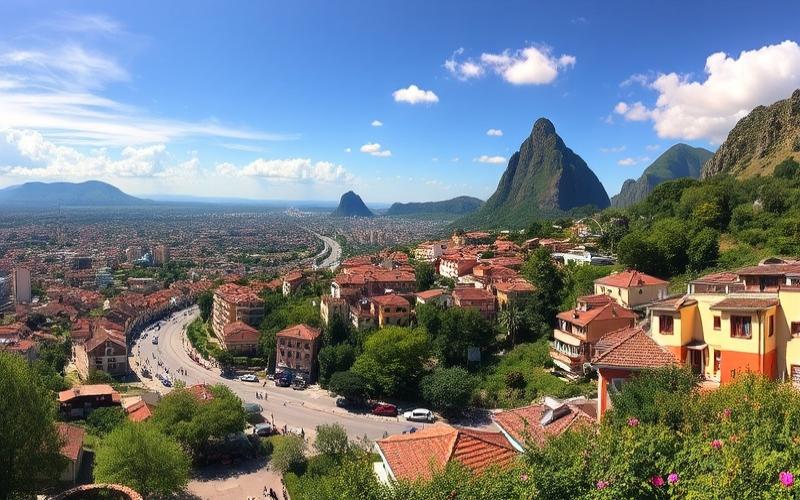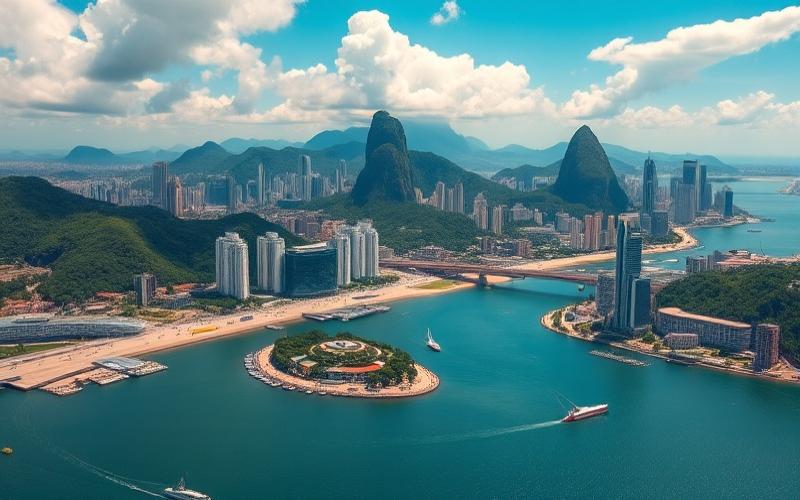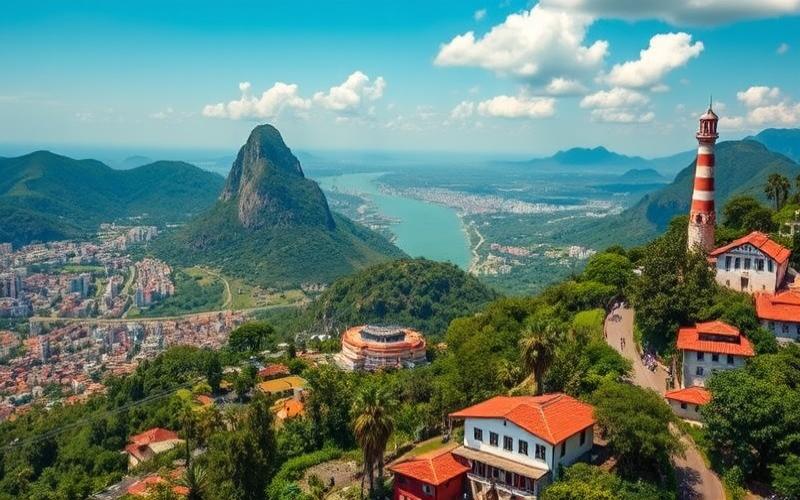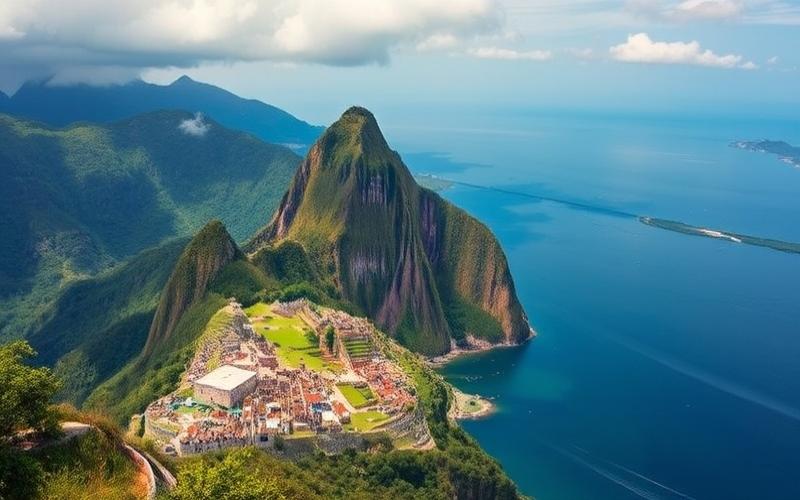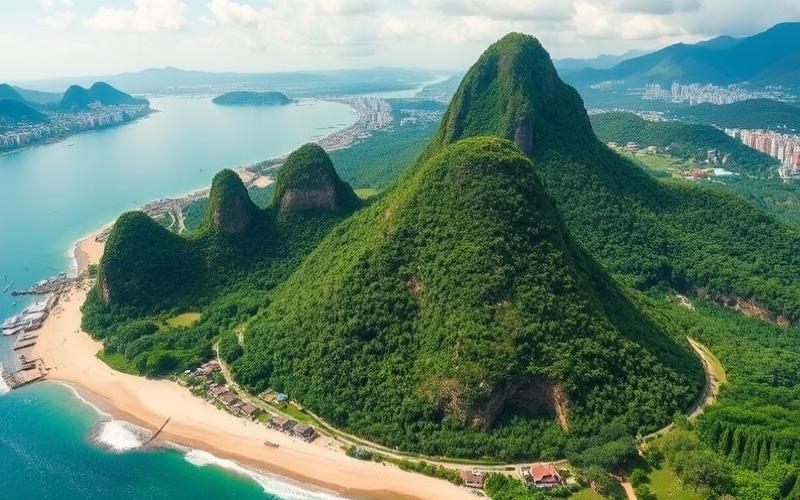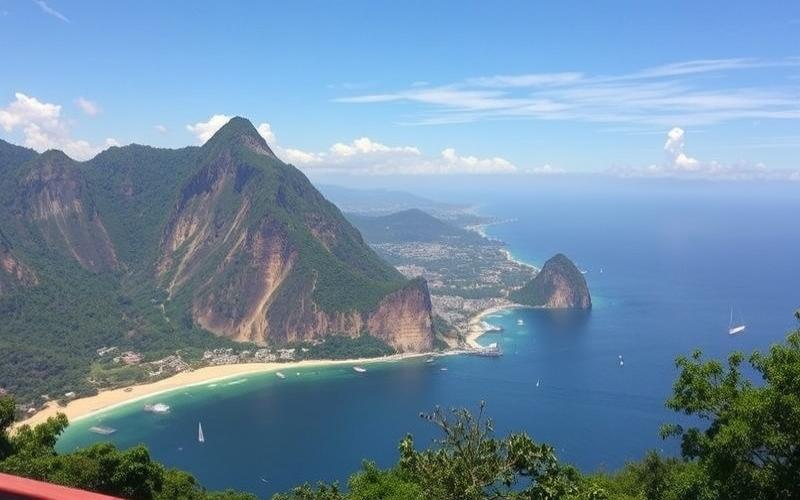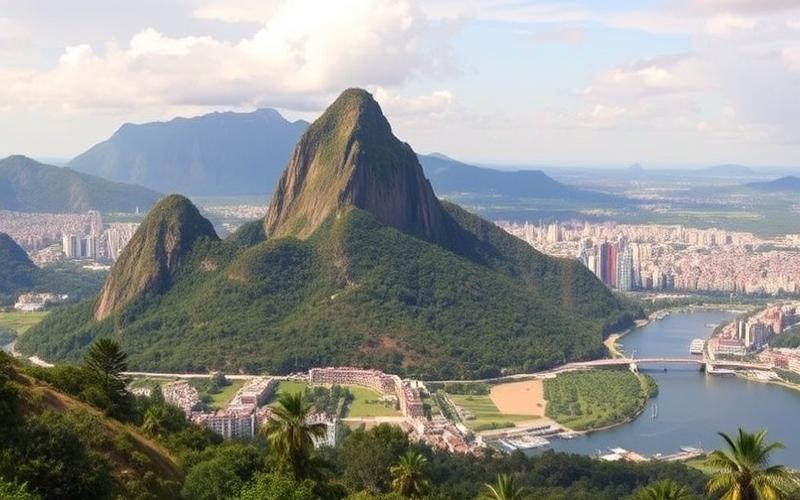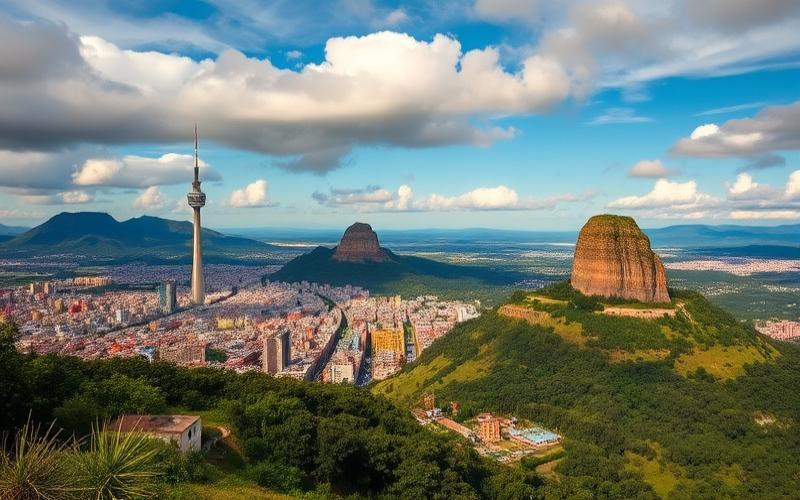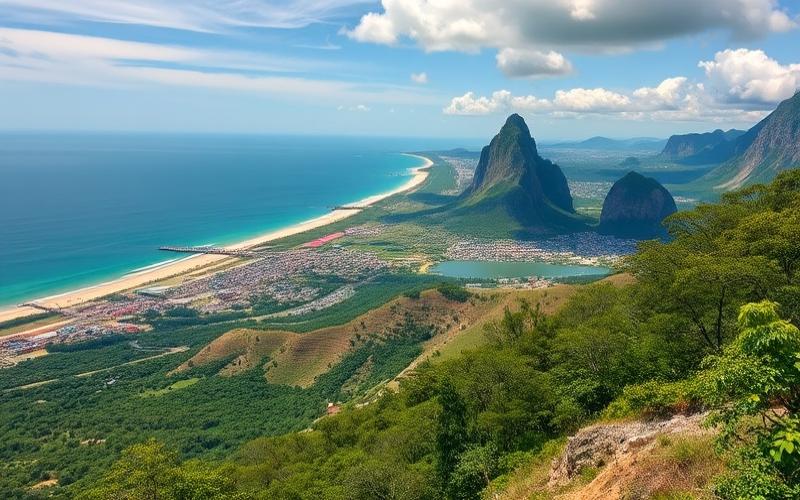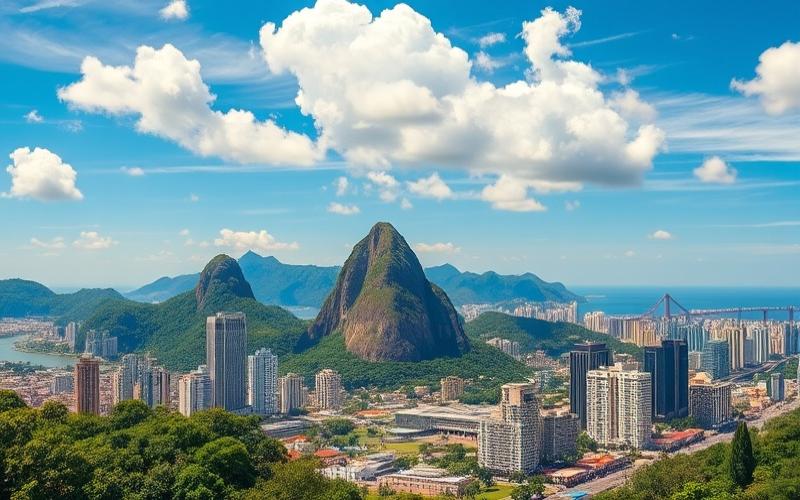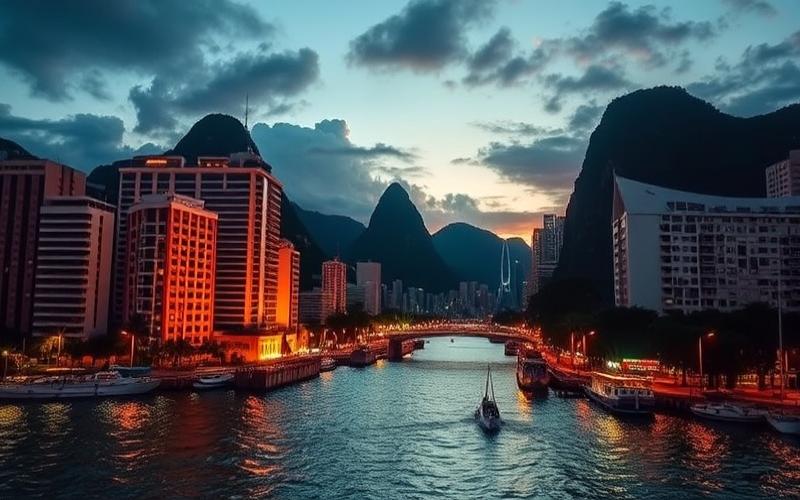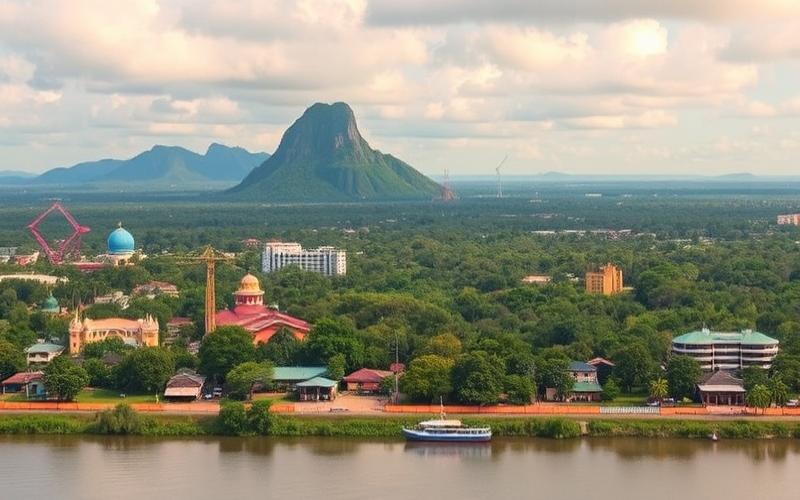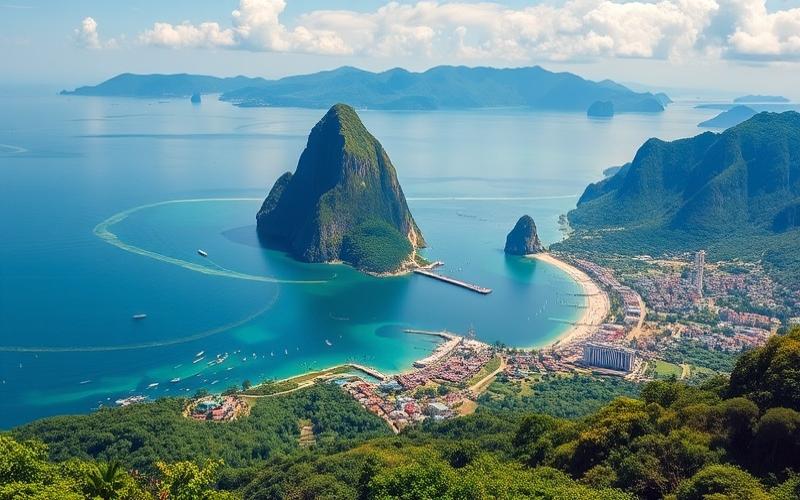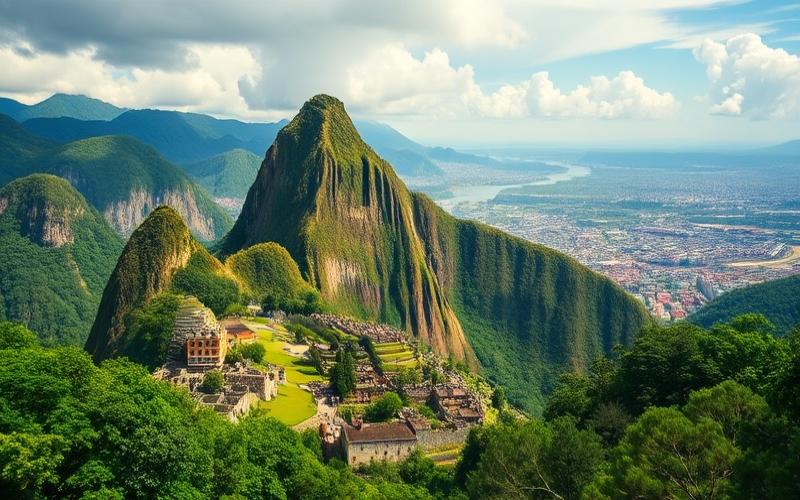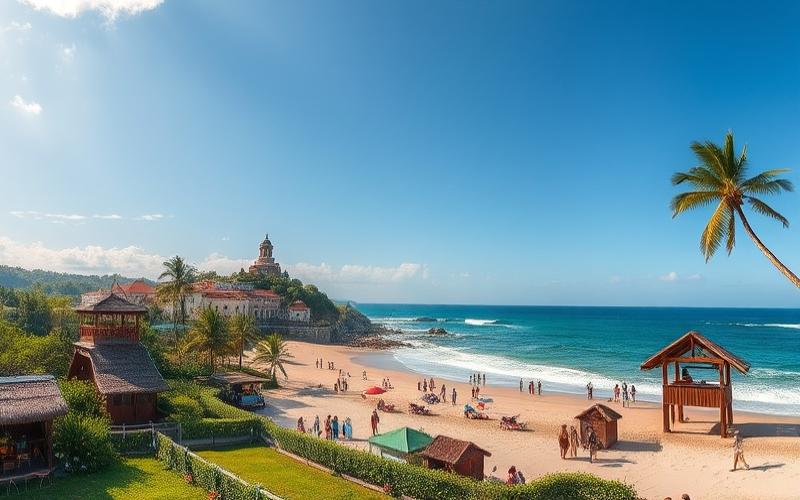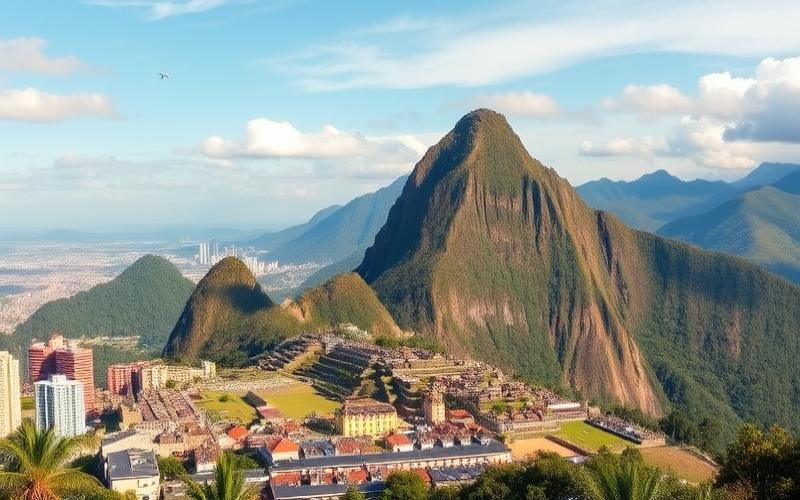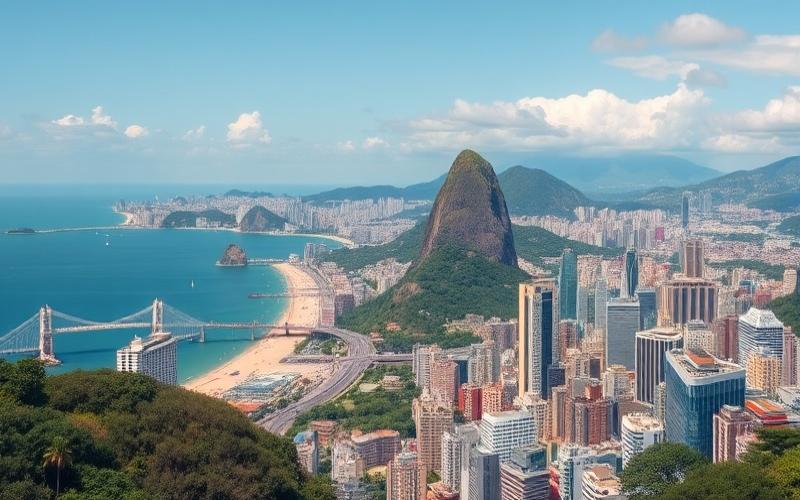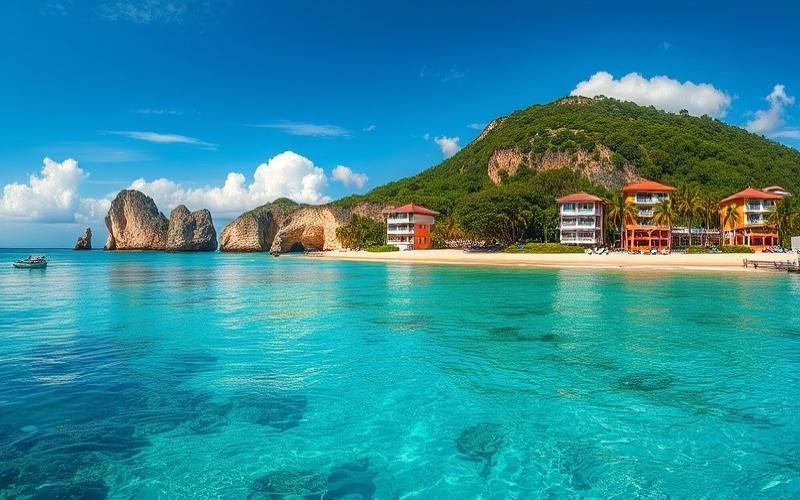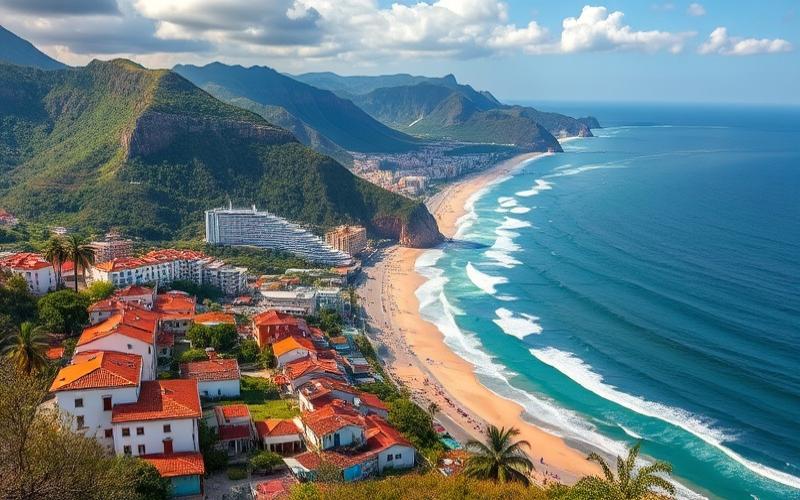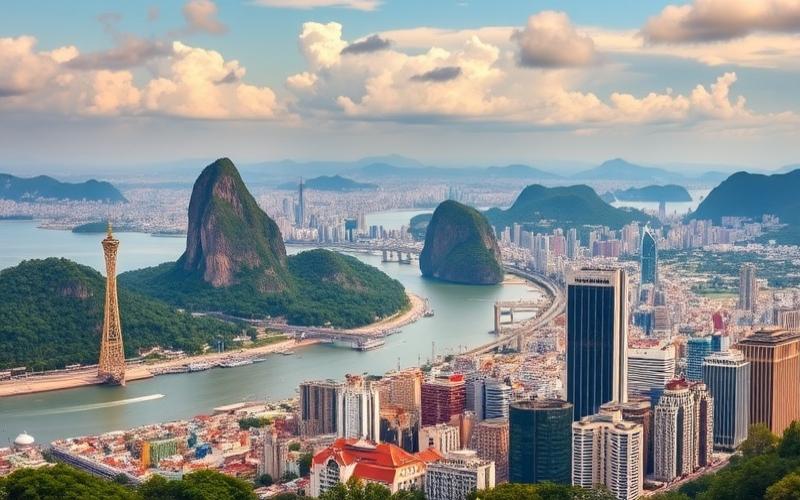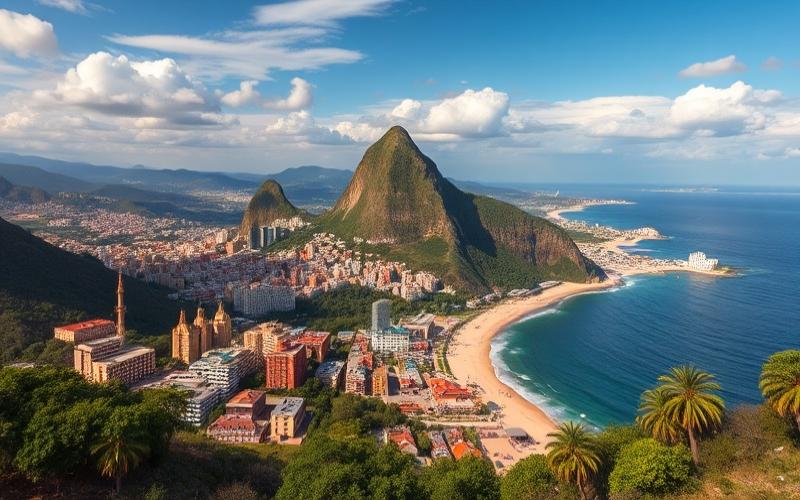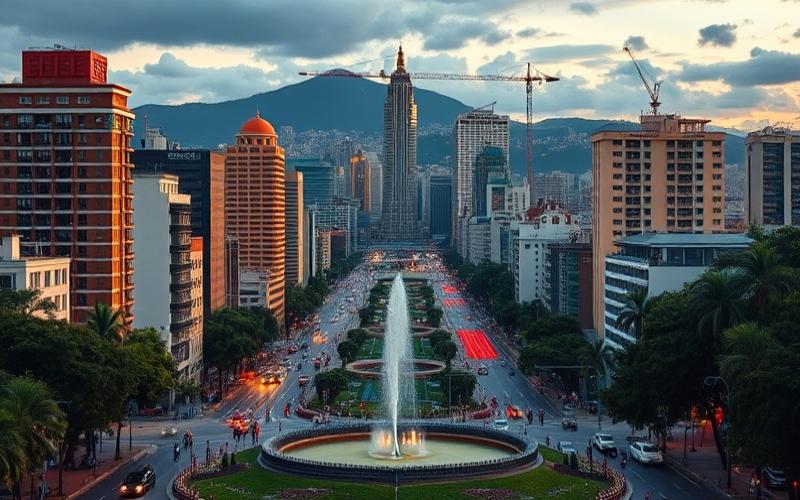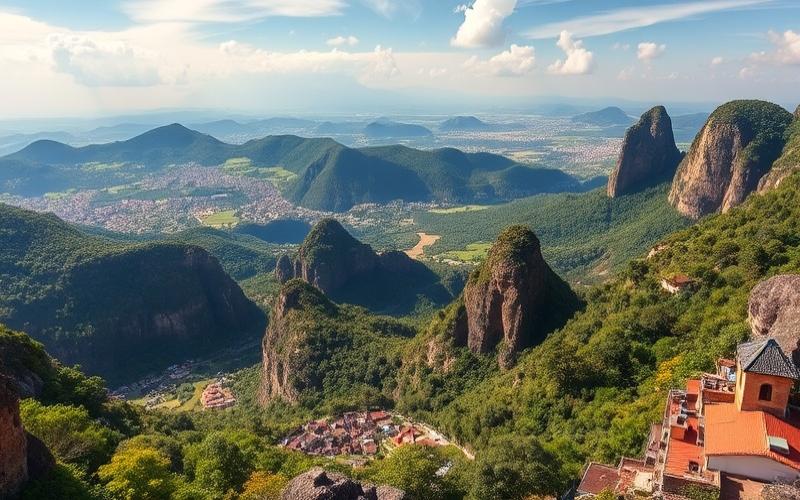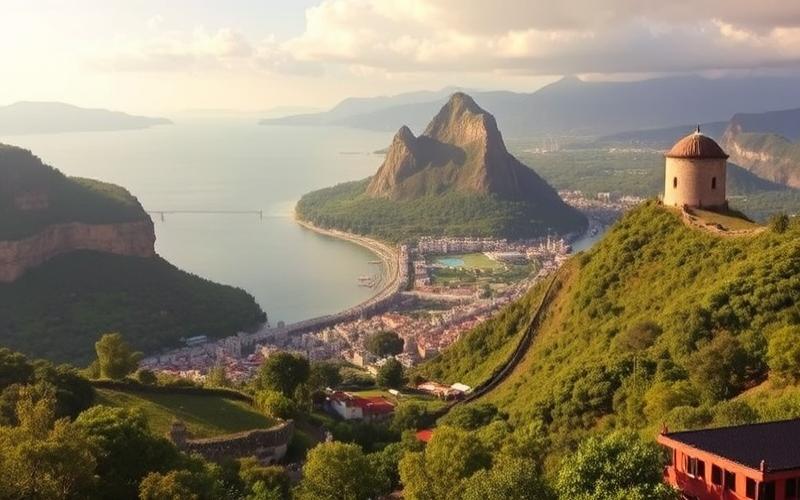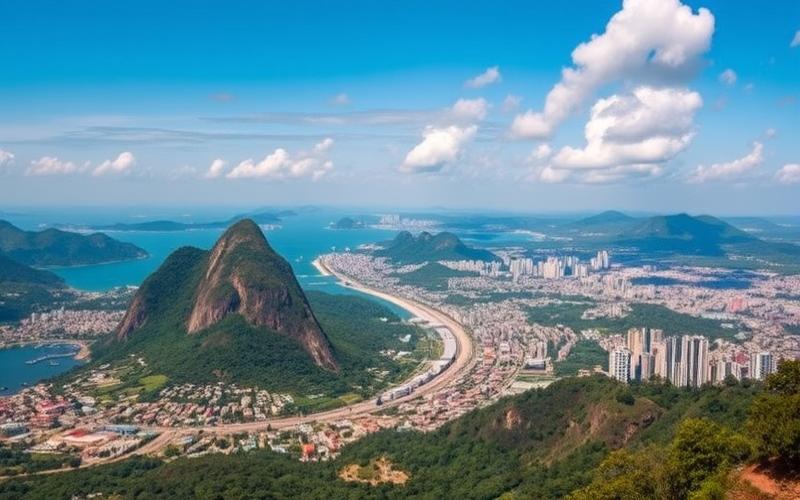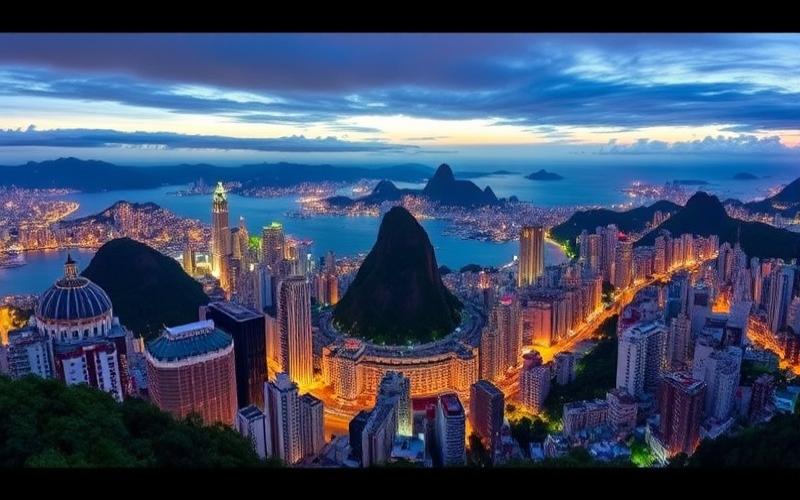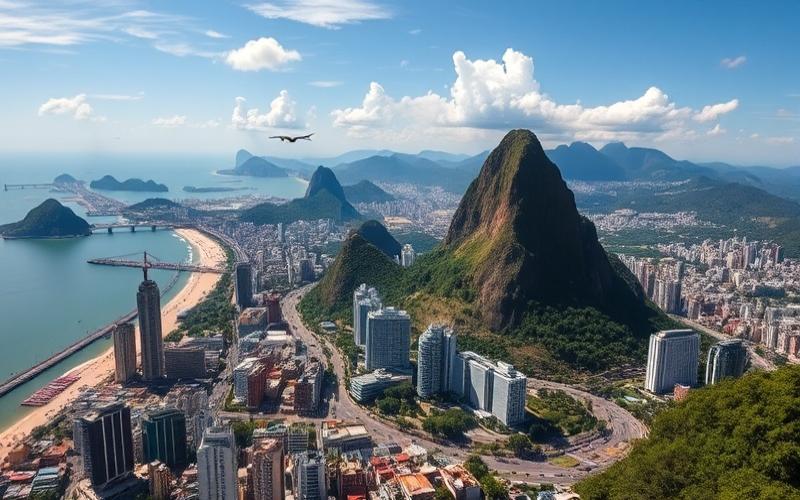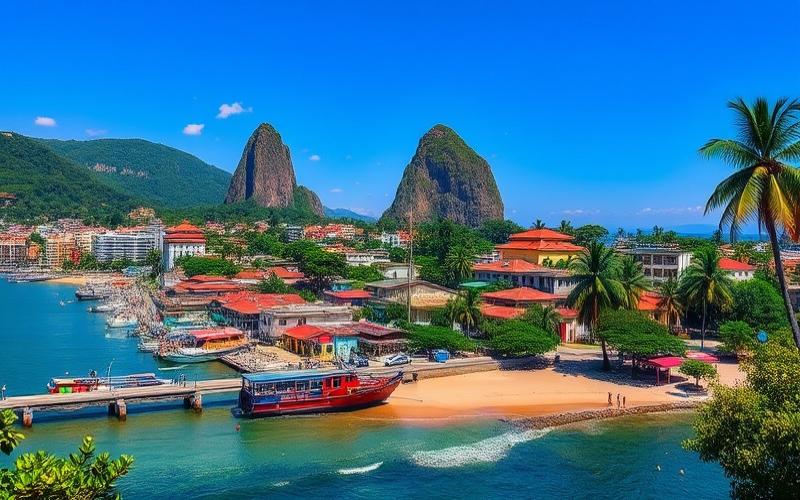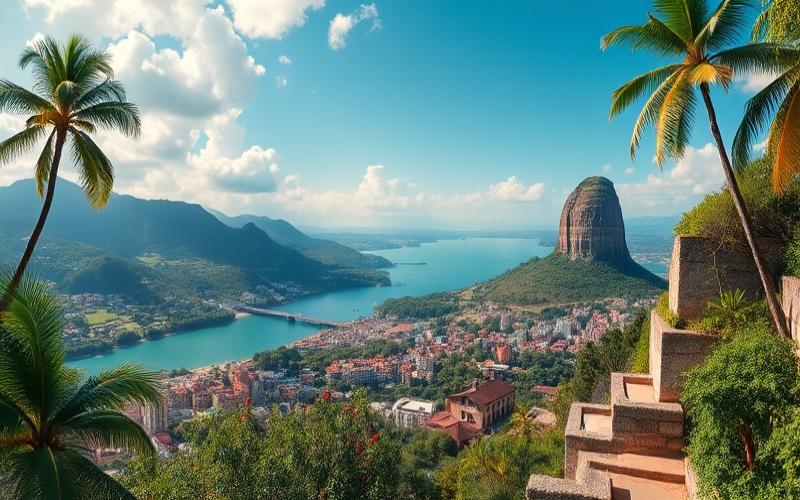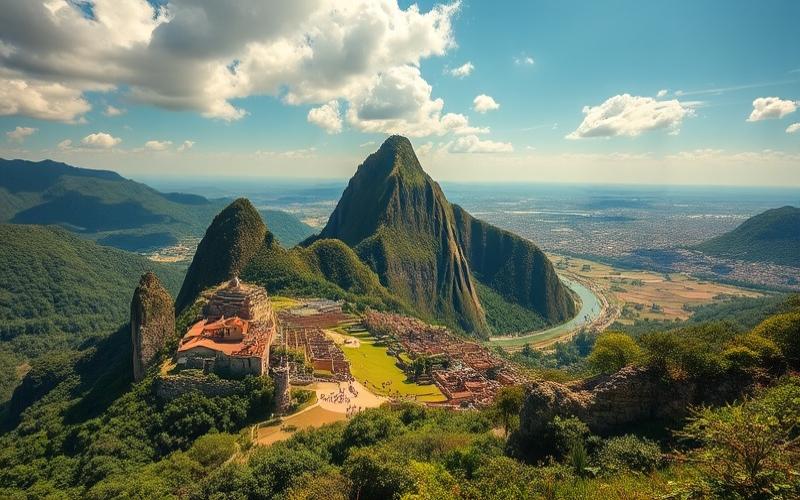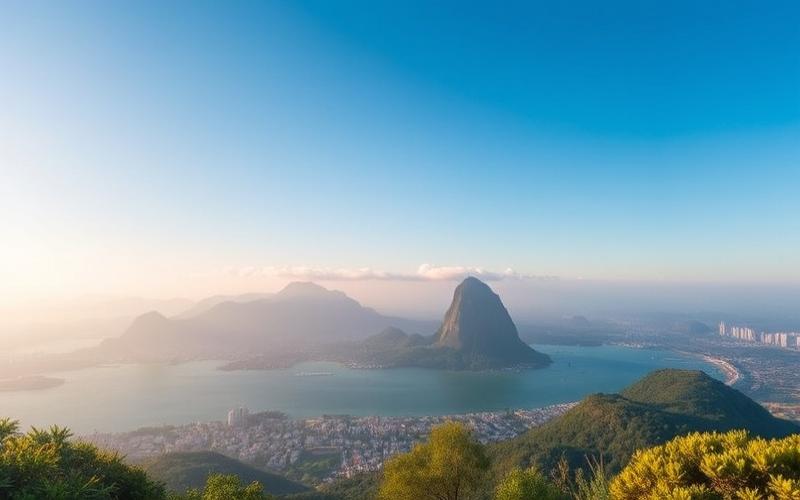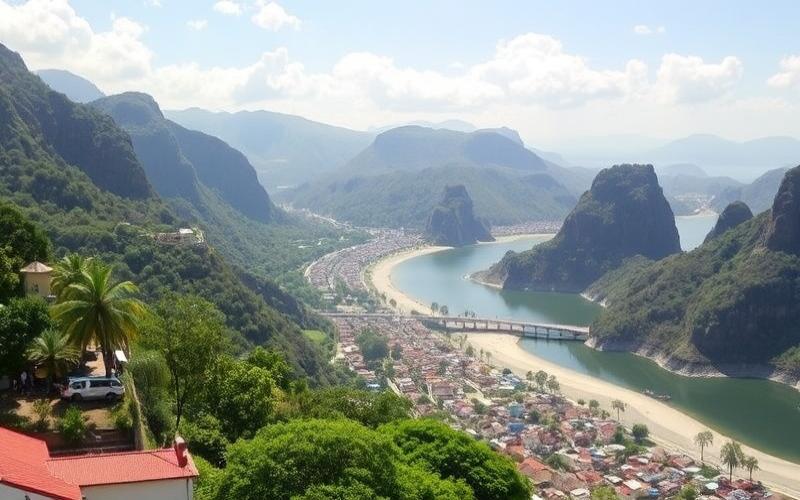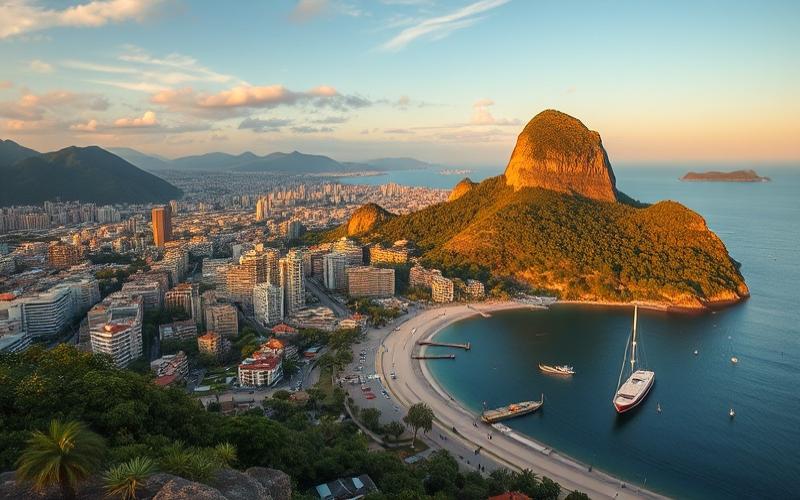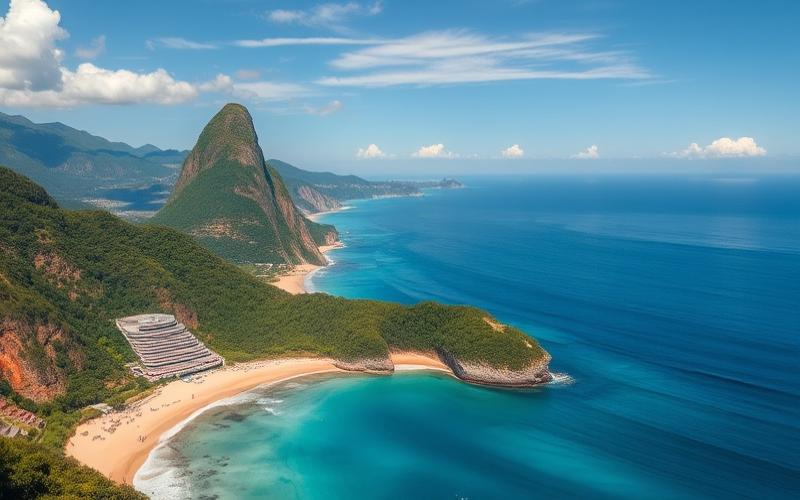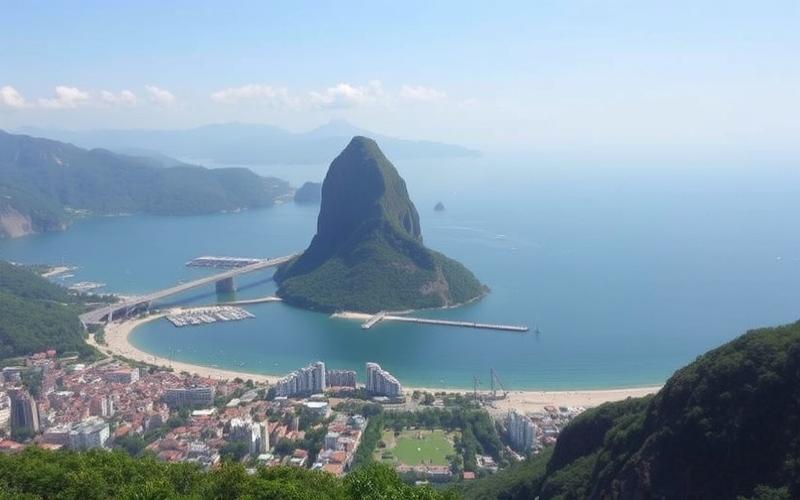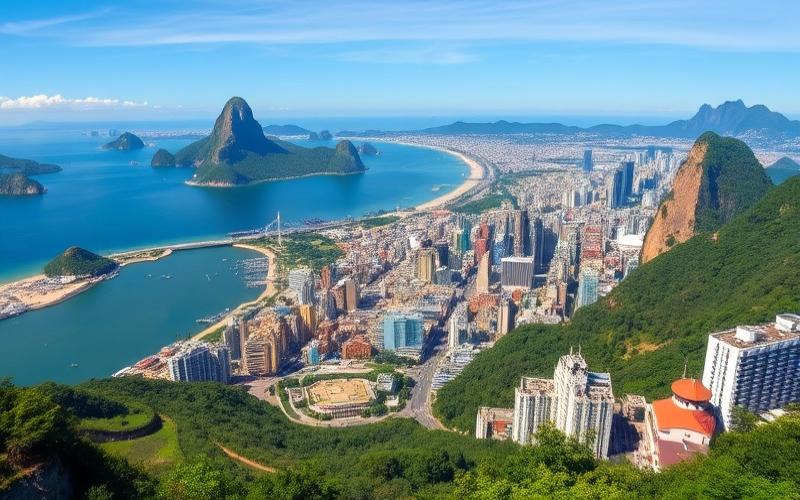
 Published on and written by Cyril Jarnias
Published on and written by Cyril Jarnias
Brazil, a country of contrasts and vast landscapes, holds undeniable appeal for many expatriates worldwide, including the French. While historically cities like Rio de Janeiro and São Paulo have always topped the destination list, a growing number of French citizens are now choosing to settle in less conventional yet equally fascinating locations.
What factors are driving these newcomers off the beaten path, and which regions of Brazil are experiencing increasing influx from the French community? This article delves into these new migration dynamics, exploring the reasons why French people are discovering Brazil’s still-unknown charms while bringing a fresh and enriching perspective to their host country.
Mapping the Main Cities Where French Expatriates Settle in Brazil
The main settlement hubs for French expatriates in Brazil are located in the Southeast and Central-West regions, with strong concentrations in São Paulo, Rio de Janeiro, and Brasília, followed by secondary clusters in the South (Curitiba, Porto Alegre, Florianópolis), Northeast (Recife, Salvador, Fortaleza), and Minas Gerais (Belo Horizonte). The registered French community abroad grew in 2024, supporting the recovery of mobility toward economic hubs like São Paulo and Brasilia. The total population of French citizens established outside France is estimated around 2.5 to 3 million, with 1.74 million registered as of December 31, 2024, registration not being mandatory.
Geographical Distribution in Brazil
- Southeast
- São Paulo (metropolitan area) — economic and financial center, strong corporate presence (industry, tech, luxury), startup ecosystem and major regional headquarters.
- Rio de Janeiro — energy and offshore, culture and tourism, creative services.
- Belo Horizonte — industry, mining-tech, agribusiness, B2B services.
- Central-West
- Brasília — federal institutions, think tanks, NGOs, consulting firms, major parastatal companies.
- South
- Curitiba, Porto Alegre, Florianópolis — tech, design, agribusiness, quality of life and attractive housing costs.
- Northeast
- Recife (Porto Digital), Salvador, Fortaleza — emerging digital hubs, tourism, creative economy.
- North
- Manaus — free trade zone, electronics and logistics, smaller presence.
Key Cities and Their Advantages for French People
São Paulo
- Opportunities: finance, consulting, retail, luxury, tech, industry, gastronomy.
- Infrastructure: international airports (GRU/CGH), coworking spaces, international schools, private healthcare options.
- Quality of life: dense urban neighborhoods with rich cultural life; high cost of living but competitive local salaries.
Rio de Janeiro
- Opportunities: energy (oil/gas), environment, audiovisual, luxury tourism, sports/events.
- Infrastructure: GIG air hub, energy clusters, universities; coastal lifestyle.
- Quality of life: urban nature, culture; security perception varies by neighborhood.
Brasília
- Opportunities: public affairs, institutional relations, NGOs, multilateral, cybersecurity and govtech.
- Infrastructure: planned urbanism, fast routes, parks; stable services.
- Quality of life: family-friendly setting, more predictable housing costs than Rio/SP.
Emerging Cities for French Expatriates
- Belo Horizonte — tech/services diversification, proximity to mining and agribusiness chains.
- Curitiba — urban planning, mobility, IT and green tech ecosystem, reputation as an “organized” city.
- Florianópolis — startup/remote work hub, beaches, good connectivity, attractive for entrepreneurs and freelancers.
- Recife — Digital Port, tech workforce, academic links.
- Salvador/Fortaleza — tourism, creative economy, growing air connectivity.
Trends and Useful Figures
- Registered French citizens abroad: 1,741,942 as of 12/31/2024; 2.8% increase vs 2023, indicating post-pandemic recovery.
- Overall estimate of French citizens abroad: around 2.5 to 3 million, registration not being mandatory.
- Expatriation periods are lengthening: many expatriates stay long-term; overall satisfaction is high according to recent sector surveys.
Popular Neighborhoods and Communities
São Paulo
- Jardins (Jardim Paulista, Jardim Europa) — shops, restaurants, relative security.
- Vila Madalena and Pinheiros — cultural life, bars, coworking spaces; creative/tech profiles.
- Itaim Bibi, Vila Olímpia, Brooklin — proximity to offices (Faria Lima/Berrini), newer apartments.
- Moema — family-friendly, access to Ibirapuera Park, good schools.
Rio de Janeiro
- Leblon, Ipanema — premium services, beach proximity, international schools.
- Botafogo, Flamengo — access to downtown/Zona Sul, good cultural offerings.
- Barra da Tijuca — residences with amenities, families, new offices.
Brasília
- Asa Sul/Asa Norte (Plano Piloto) — local commerce, schools, mobility.
- Lago Sul/Lago Norte — residential, villas, families, embassies.
South and Northeast
- Curitiba: Batel, Água Verde — chic residential, services.
- Florianópolis: Lagoa da Conceição, Jurerê — remote workers, quality of life.
- Recife: Boa Viagem — waterfront, services; proximity to Porto Digital for tech profiles.
Recurring Attractiveness Factors
- Job market: finance/industry/tech in São Paulo; energy and creative in Rio; public affairs and consulting in Brasília.
- Education/healthcare: presence of international schools and recognized private healthcare options in major capitals.
- Connectivity: international flights, regional hubs, high-speed internet in major metropolitan areas.
- Lifestyle: cultural richness, gastronomy, climate; active francophone communities (associations, professional networks).
Examples of Useful Communities and Networks
- Francophone associations and clubs in state capitals.
- French-Brazilian professional networks and chambers of commerce.
- Online support groups by city/neighborhood for housing, schooling and employment.
French expatriates in Brazil concentrate in the Southeast (São Paulo, Rio, Belo Horizonte) and Central-West (Brasília), with growing hubs in the South and Northeast. City choices reflect a trade-off between careers (finance/industry/energy/govtech), infrastructure (schools, healthcare, flights) and quality of life (secure neighborhoods, culture, coastline). Recent statistics confirm the recovery of mobility, but official figures remain incomplete due to non-mandatory registration.
Good to Know:
In Brazil, French expatriates mainly concentrate in large metropolitan areas such as São Paulo, Rio de Janeiro, and Brasília, due to their varied professional opportunities and quality of life. São Paulo, in particular, attracts French people through its dynamic business sector and well-established community in neighborhoods like Vila Madalena and Jardins. Rio de Janeiro is prized for its relaxed lifestyle and friendly areas like Leblon and Ipanema. Brasília, although smaller, hosts a growing proportion of expatriates due to its thriving diplomatic scene. Cities like Curitiba and Florianópolis are also starting to attract attention, thanks to their solid infrastructure and pleasant living environment. According to a recent study, about 60% of French residents in Brazil choose these destinations. Testimonials indicate a preference for neighborhoods offering international schools and active cultural life, crucial factors in their settlement choices.
Favorite Neighborhoods of French Speakers in Brazil
The main cities where the French-speaking community is most visible in Brazil are Rio de Janeiro, São Paulo, and Brasília, historically the settlement hubs for French people and French speakers due to economic opportunities, educational and cultural institutions, and a network of services adapted to expatriates. In these metropolitan areas, preferred neighborhoods are generally located in the most central and affluent zones, where international schools, internationally-oriented businesses, and easy access to cultural centers and consulates are found.
Rio de Janeiro (Zona Sul)
- Popular neighborhoods: Leblon, Ipanema, Lagoa, Gávea, Jardim Botânico, Flamengo, Urca, Laranjeiras, prized for relative security, green spaces, proximity to beaches and cultural facilities.
- Advantages: efficient transportation networks in Zona Sul, high-end urban environment, leisure and cultural offerings, and easy access to downtown business centers.
- Real estate dynamics: Leblon and Ipanema are among the neighborhoods with the highest square meter prices in the country, indicating a privileged setting often sought by expatriates.
- French-speaking services: French cuisine restaurants, cafe-bakeries, conversation clubs, cultural workshops and expatriate support associations concentrate in Zona Sul, anchored around the mentioned neighborhoods.
- Events/initiatives: French film screenings, French-Brazilian business meetings, networking events in Zona Sul clubs and cultural centers, fostering community cohesion.
São Paulo
- Popular neighborhoods: Vila Nova Conceição, Jardim Paulistano, Jardim Europa, Ibirapuera (Jardins–Moema–Itaim Bibi axis), high-end areas, well-served and close to economic hubs, sought after by international company executives.
- Advantages: proximity to corporate headquarters and financial hubs, dense cultural life, access to international schools and premium services.
- Real estate dynamics: several neighborhoods in this sector rank among the most expensive in the country, reflecting a high-end market concentrating a significant share of expatriates.
- French-speaking services: restaurants, specialty food stores, foreign bookstores, business clubs and alumni networks located around Jardins and Itaim, with regular networking events.
- Events/initiatives: French cultural festivals, professional meetings and association activities contributing to a strong sense of belonging in these business districts.
Brasília
- Neighborhoods and sectors: planned residential areas by sectors (e.g. SHIS, SHTN), with access to sports clubs around Lake Paranoá (SCES/SCEN), banking and commercial sectors (SBN/SBS, SCN/SCS), and diplomatic services, attracting many international civil servants and expatriates.
- Advantages: accessibility to federal and diplomatic institutions, community life around lakeside clubs and modern infrastructure.
- French-speaking services: international dining options, clubs and leisure centers structured by sector, facilitating socialization for expatriate communities.
- Events/initiatives: cultural and sports activities in clubs (SCES/SCEN) and events related to diplomatic representations, strengthening community ties.
Data and Statistical Trends
French/Francophone Population
- Estimate of French people living in Brazil: approximately 30,000 (2014), mostly in São Paulo and Rio de Janeiro, the largest French community in Latin America in terms of expatriate numbers.
- Heritage: nearly 1 million Brazilians are estimated to be of French descent, demonstrating historical presence and family networks that can facilitate integration in these regions.
Available French-Speaking Services (by metropolitan area)
- Rio de Janeiro (Zona Sul):
- French restaurants/cafes: strong concentration in Leblon, Ipanema, Jardim Botânico.
- Bookstores and culture: periodic French programming, events in central and southern neighborhoods.
- Clubs/associations: expatriate networking and support groups.
- São Paulo (Jardins–Itaim–Moema–Vila Nova Conceição):
- Restaurants/specialty stores: premium and international offerings, adapted to expatriates.
- Bookstores/cultural centers: presence of French events and professional networks.
- Social clubs: French-Brazilian afterworks, business clubs.
- Brasília (SCES/SCEN, SHIS sectors):
- Sports and social clubs: strong centrality around Lake Paranoá.
- Diplomatic and international networks: structuring activities for the community.
Characteristics That Attract French Speakers
- Proximity to international schools and French or bilingual education, facilitating family settlement.
- Internationalized job market: neighborhoods close to business centers and consulates, with easy mobility.
- Living environment: relative security, green spaces, cultural leisure and sports (beaches in Rio, Ibirapuera Park in São Paulo, lakeside clubs in Brasília).
- Community networks: density of French-speaking services, regular events and mutual support among expatriates, accelerating integration.
Comparative Table of Preferred Neighborhoods
| City | Sought-after neighborhoods/sectors | Major advantages | Attractiveness indicators |
|---|---|---|---|
| Rio de Janeiro | Leblon, Ipanema, Lagoa, Gávea, Jardim Botânico, Flamengo, Urca, Laranjeiras | Beach access, green spaces, cultural offerings, transportation | High price per m² in Zona Sul, premium urban life |
| São Paulo | Vila Nova Conceição, Jardim Paulistano, Jardim Europa, Ibirapuera (Jardins–Moema–Itaim) | Proximity to economic hubs, schools and premium services | Several neighborhoods among national price tops |
| Brasília | SHIS, SCES/SCEN, SBN/SBS, SCN/SCS | Access to federal and diplomatic institutions, Lake Paranoá clubs | Planned urbanism and services structured by sector |
Testimonials from French Residents
- “We chose Leblon for the quality of life, relative security and proximity to international schools and the beach, which facilitate children’s integration.”
- “In São Paulo, settling near Ibirapuera places us steps away from offices and professional networks, while maintaining green spaces for the family.”
- “In Brasília, community life naturally organizes around Lake Paranoá clubs; it’s ideal for building connections and participating in cultural events.”
Points to Consider
- The mentioned neighborhoods in Rio and São Paulo stand out for their higher cost of living, reflecting strong expatriate demand and high service levels.
- Brasília’s sector-based urban planning facilitates access to grouped services (clubs, commerce, offices), an advantage for newcomers.
- The historical French presence in Brazil supports an extended social network and regular events that strengthen the sense of belonging.
Good to Know:
In Brazil, neighborhoods like Leblon in Rio de Janeiro, Vila Madalena in São Paulo, and Asa Sul in Brasília are popular among French speakers, attracted by the presence of French schools like Lycée Molière and Lycée Pasteur, as well as various French businesses and cultural institutions. These neighborhoods stand out for their dynamic and cosmopolitan atmosphere with abundant French cafes, bookstores and social clubs, such as Alliance Française. Resident testimonials, like that of Marie, a French expatriate, highlight the quality of life and sense of community fostered by these infrastructures. According to recent statistics, the French-speaking population is constantly increasing, exceeding 30,000 people between Rio de Janeiro and São Paulo. Events such as the French Film Festival strengthen cultural ties and the sense of belonging to the Brazilian French-speaking community.
French Networks and Communities in Brazil: Facilitated Integration
The French presence in Brazil dates back to the 16th century, from commercial expeditions to colonization attempts (Fort Coligny in Rio in 1555) through prolonged incursions between 1523 and 1631, which anchored initial human, linguistic and religious exchanges along the coast.
In the 19th century, French became the language of the Brazilian elite under Enlightenment influence, while French immigration — numerically modest but structuring — contributed to agricultural and artisan colonies, then to urban professional and cultural networks.
- French-Brazilian networks and communities consolidated around three dynamics: mobility of students and professionals, cultural institutions (alliances, associations), and economic and scientific cooperation, cementing a space for transnational exchange and sociability.
- Despite historically low French migration flows proportionally, the nuclei formed at the turn of the 19th-20th centuries (e.g. colonies in Santa Catarina, Paraná, Pará, Rio Grande do Sul) served as support points for contemporary networks, often through family and associative heritage.
Main Activity Areas of Networks
- Commerce and entrepreneurship: chambers of commerce, business clubs and subsidiaries facilitate partnerships, establishment and expertise circulation; this dynamic fits within an ancient and institutionalized bilateral relationship, strengthened in the 21st century by strategic agreements.
- Education and research: Alliances Françaises disseminate the language and serve as connection hubs; university exchanges extend the historical hegemony of French in intellectual circles and create binational alumni communities.
- Arts and creative industries: festivals, exhibitions and artist residencies extend a tradition of cultural transfers dating from when French dominated urban cultural life in Brazil.
- Community and integration: French-Brazilian associations structure welcome, practical information (health, schooling, law), professional support (mentoring, sector networks) and conviviality (events, clubs), ensuring continuity of interpersonal ties woven since the 19th century.
Organizations and Support Systems for Integration
- French-Brazilian associations: locally anchored, they materialize proximity solidarity (support groups, scholarships, expatriate tutoring), capitalizing on historical sociability and experience from earlier immigration waves.
- Alliances Françaises: cultural and linguistic network nationwide, offering courses, certifications and cultural programming, and serving as meeting platforms for students, families and economic actors.
- Institutional networks: educational and scientific cooperation, France-Brazil strategic partnerships and bilateral economic initiatives facilitate access to contacts, regulatory information and professional visibility.
Integration Ease, Solidarity and Mutual Support
- Network effect: density of venues (Alliances, associations) and events lowers linguistic and cultural barriers; mutual support relies on ancient practices of French-Brazilian sociability (salons, circles, clubs), updated in contemporary formats (meetups, alumni, mentoring).
- Shared cultural capital: the historicity of French among Brazilian elites and circulation of ideas since the Enlightenment create favorable ground for mutual recognition and intercultural dialogue.
- Intergenerational continuity: heirs of colonies and migration waves maintain memories and know-how, stabilizing welcome and orientation networks for newcomers.
Examples of Brazilian Cities Where Communities Are Particularly Active and Their Roles
- São Paulo
- Economic hub where the tradition of welcoming foreigners since the late 19th century left a fabric of professional and associative networks; these networks catalyze commerce, innovation and French-Brazilian cultural initiatives.
- Linguistic and cultural spaces support family integration (courses, exams, activities), strengthening community ties.
- Rio de Janeiro
- Major historical heritage (Fort Coligny; early French-Portuguese interactions), becoming a narrative and identity foundation for the community; cultural institutions play a central role in artistic mediation and French dissemination.
- Networks anchored in cultural and educational sectors extend the city’s Francophile tradition.
- Brasília
- Diplomatic capital embedded in bilateral relations and recent strategic partnerships; networks operate at the interface of administrations, universities and companies, facilitating integration of experts and international civil servants.
- Linguistic and cultural systems serve as bridges for families and student communities.
| Key Domain | São Paulo | Rio de Janeiro | Brasília |
|---|---|---|---|
| Commerce/business | Business networks and sector partnerships | Exchanges related to creative industries and services | Institutional cooperation and public contracts |
| Education/language | Broad course/certification offerings; alumni networks | Historical cultural hubs; French dissemination | Systems for diplomats, civil servants, students |
| Arts/culture | Urban festivals and residencies | Museum programming and artistic scenes | Official bilateral events |
| Integration/support | Professional mentoring, practical info, clubs | Convivial and intergenerational community | Welcome for international staff and families |
Operational summary: the longevity of French-Brazilian contacts, the cultural centrality of French in the 19th century and a robust institutional network explain the current vigor of networks; these reduce integration costs, support mobility and maintain French-Brazilian intercultural ties through pivot cities and enduring organizations.
Good to Know:
The French presence in Brazil dates back to the 16th century, marked by Villegagnon’s expedition, and intensified over the decades, leading to the formation of dynamic French-Brazilian networks and communities. These networks, often centered around cities like São Paulo, Rio de Janeiro, and Brasilia, stand out in commerce, education, and the arts, and are supported by structures such as Alliances Françaises and French-Brazilian associations. These organizations play a key role in facilitating expatriate integration through language courses, cultural events and practical advice. The solidarity and support they provide help maintain a strong bond between French and Brazilian cultures, allowing newcomers to adapt quickly to their new environment while preserving their cultural identity. Members of these networks benefit from valuable mutual support, making settlement in Brazil more welcoming and accessible.
Disclaimer: The information provided on this website is for informational purposes only and does not constitute financial, legal, or professional advice. We encourage you to consult qualified experts before making any investment, real estate, or expatriation decisions. Although we strive to maintain up-to-date and accurate information, we do not guarantee the completeness, accuracy, or timeliness of the proposed content. As investment and expatriation involve risks, we disclaim any liability for potential losses or damages arising from the use of this site. Your use of this site confirms your acceptance of these terms and your understanding of the associated risks.


